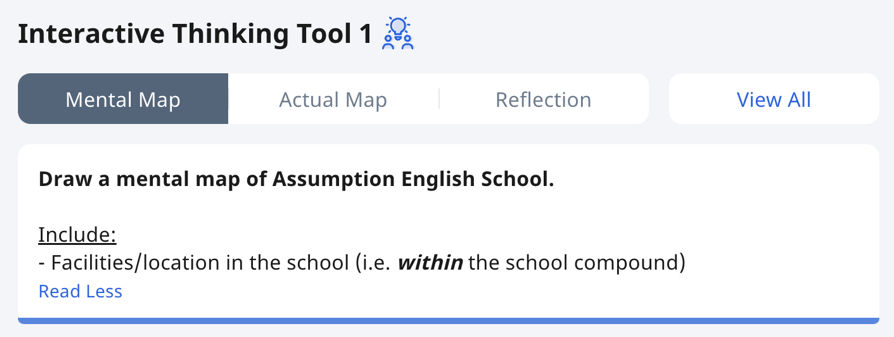#66: Mental Mapping: A Lesson on Space, Memory, and Perception
- Wen Xin Ng

- May 31, 2024
- 3 min read
Updated: Oct 13, 2024
Embarked on a mental mapping exercise with my Sec 3 Elective Geography class. This simple yet revealing task allowed us to explore how each of us perceived and remembered our everyday surroundings; how we each experienced space and place in a deeply personal way.
Step 1: Drawing a Mental Map of the School

Some submissions:

Step 2: Analysing their Mental Maps
After students completed their mental maps of the school, guiding questions were posed to encourage them to articulate their thought processes.

Reflection: | Class Discussion: | Takeaways: |
|---|---|---|
|
| Each map was a unique reflection of the individual’s personal experience within the same shared space.
|
|
| These differences/ distortions can reflect each student’s perception of space based on how often they visit certain areas or their feelings about those places.
|
|
|
|
Step 3: Consolidation
Getting students to draw their mental map helped them grasp the importance of mental maps as a way to understand how people experience places differently. By reflecting on what they included, omitted, and emphasised, students gained insight into how subjective factors shape our understanding of space. This encourages critical thinking about how maps are more than objective representations—they're shaped by what each person values, remembers, and experiences.
BONUS:
When I first looked at Jovyn's map, I assumed the stick figures represented her and her classmates. I was both amused and impressed when I realised she was actually depicting the statues in the courtyard (and yes, one of the stick figures was Mother Mary 🤯). It was yet another reminder that mental maps are truly a reflection of one's unique memories and interactions with a space.
For context:






























Comments